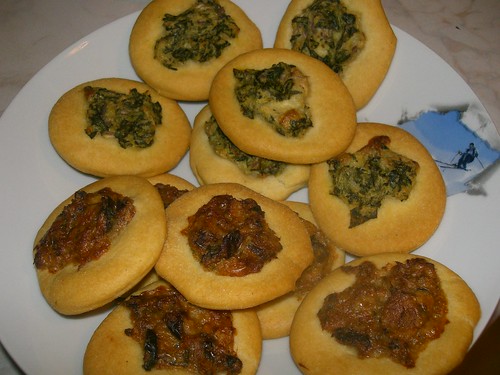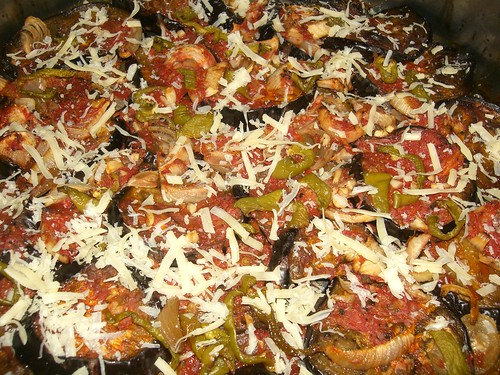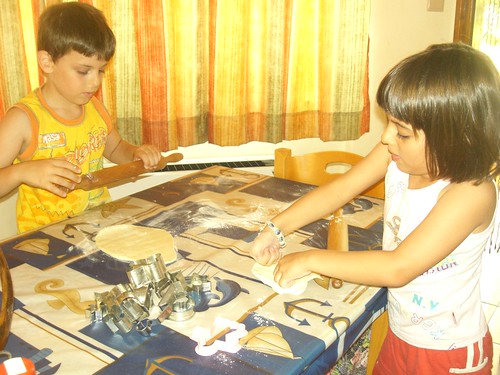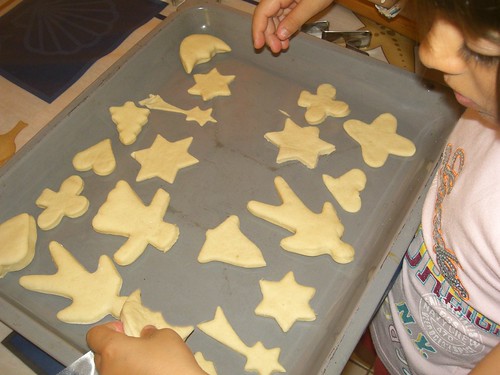To feed a family frugally with healthy frugal home cooking, you need to keep them excited and surprised by what they see coming out of the oven or the pot. The food has to look enticing and different - it may be made with the same ingredients, but it must look enticing and different.
I had some leftover pizza pastry from our last pizza making session a couple of nights ago where we'd made pizza and peinirli (boat-shaped baked sandwiches), but now it's time to get back to tackling the garden spinach before it starts to warm up. I made some spanakopita filling which I turned into vegetarian peinirli.

The main meal for the next day was makaronada (Greek-style spaghetti bolognaise). This gave me an idea for another pizza-based meal: Turkish lahmacun, the Middle Eastern equivalent of pizza. The chef at MAICh makes this on a rotating basis for the staff and student lunch, with both a vegetarian and meat version offered for students to choose.

Lahmacun is usually made with an egg-based pastry topped with a spicy mince sauce. Our Middle eastern students often roll it up a bit like souvlaki after having stuffed it with some salad and yoghurt sauce. So it's a very versatile kind of pie. I spread some of my home-made tomato sauce on teh pastry before spreading the mince sauce. The topping sticks to the pastry and does not break or roll off the pastry.


The spanalopita peinirli and lahmacun were all cooked together. The lahmacun was brushed with olive oil while the peinirli got an egg wash, a bit like a spanakopita, topped with some seasame seed. To check if they have been cooked, I simply turned the pastry over to see if the bottom of the pies had browned. They don't need a long cooking time - about 25 minutes in a hot oven.


We are eating delicious food made with similar ingredients on a daily basis, but no one seems to notice when you use the same ingredients in a unique way every time.
I had some leftover pizza pastry from our last pizza making session a couple of nights ago where we'd made pizza and peinirli (boat-shaped baked sandwiches), but now it's time to get back to tackling the garden spinach before it starts to warm up. I made some spanakopita filling which I turned into vegetarian peinirli.

The main meal for the next day was makaronada (Greek-style spaghetti bolognaise). This gave me an idea for another pizza-based meal: Turkish lahmacun, the Middle Eastern equivalent of pizza. The chef at MAICh makes this on a rotating basis for the staff and student lunch, with both a vegetarian and meat version offered for students to choose.

Lahmacun is usually made with an egg-based pastry topped with a spicy mince sauce. Our Middle eastern students often roll it up a bit like souvlaki after having stuffed it with some salad and yoghurt sauce. So it's a very versatile kind of pie. I spread some of my home-made tomato sauce on teh pastry before spreading the mince sauce. The topping sticks to the pastry and does not break or roll off the pastry.


The spanalopita peinirli and lahmacun were all cooked together. The lahmacun was brushed with olive oil while the peinirli got an egg wash, a bit like a spanakopita, topped with some seasame seed. To check if they have been cooked, I simply turned the pastry over to see if the bottom of the pies had browned. They don't need a long cooking time - about 25 minutes in a hot oven.


We are eating delicious food made with similar ingredients on a daily basis, but no one seems to notice when you use the same ingredients in a unique way every time.
©All Rights Reserved/Organically cooked. No part of this blog may be reproduced and/or copied by any means without prior consent from Maria Verivaki.










































